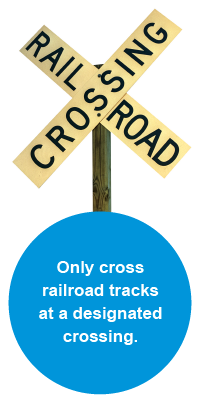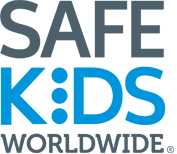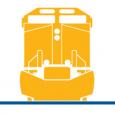You are here
Railroad Safety
Railroad Safety
 Trains are exciting and fun for many reasons: The size, the speed, the sounds. But railroad tracks and train crossings can be dangerous as well. Here are some train and railroad safety tips to help keep your family safe near tracks and trains.
Trains are exciting and fun for many reasons: The size, the speed, the sounds. But railroad tracks and train crossings can be dangerous as well. Here are some train and railroad safety tips to help keep your family safe near tracks and trains.
Hard Facts about Safety around Railroad Tracks
In 2017, there were 2,106 collisions reported at rail crossings in the U.S.
Top Tips about Railroad Safety
- Only cross train tracks at a designated crossing. Designated crossings are marked by a sign, lights or a gate.
- If lights are flashing or the gate is down at a railroad crossing, wait for the train to pass completely, the gates to lift and the lights to stop flashing before crossing. It is never okay to rush across and try to beat the train. Trains may be closer and faster than you think.
- Allow enough space for your vehicle to completely clear the entire railroad crossing, not just the tracks, before you attempt to cross. Remember, trains are at least three feet wider than the tracks on either side, so even though you clear the tracks, you may still get hit by the train.
- If you are using a cell phone, headphones or playing a game on your mobile phone, remember: Heads Up, Devices Down when you cross the tracks. Once a train starts to brake, it can take a mile for the train to stop. So, when you see a train, it’s already too late for it to stop for you. Headphones should be removed, so you can hear an approaching train.
- Don’t be tempted to walk along the train tracks. It might be a shortcut, but it is dangerous and not worth the risk. It is also against the law to walk on the track and the land around it because it is private property.
Learn More
This is just the first stop. Learn more railroad safety tips to protect your child. We work with Union Pacific to promote railroad safety. Learn more about our partnership.

